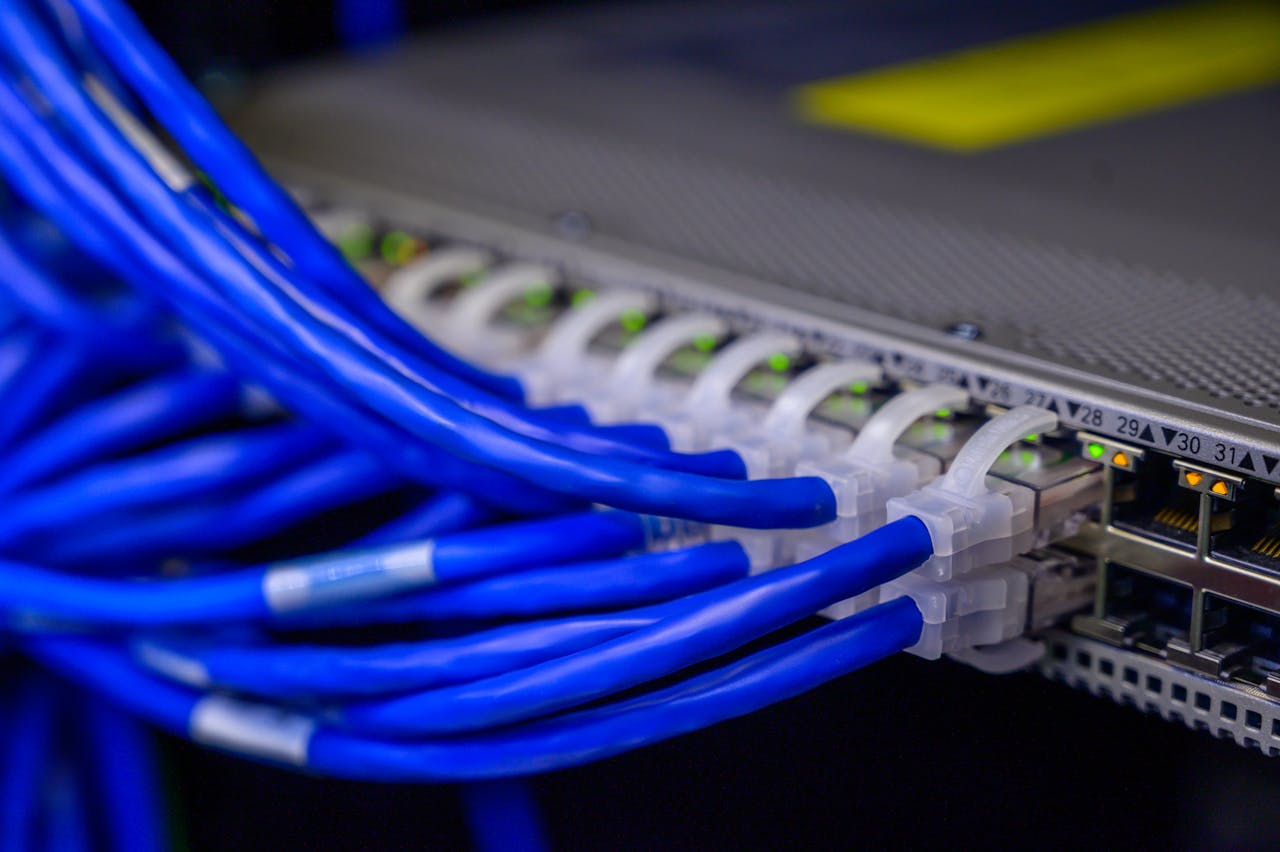When choosing an internet connection, one of the most common questions many people have is: What’s the difference between fibre and standard broadband? In this guide, we’ll explore broadband vs fibre, including the technical aspects, performance, and how they stack up in terms of reliable connections and faster speeds.
Understanding these differences will help you make an informed decision about which type of broadband connection is best suited to your needs. Let’s dive in and explore the core distinctions between these two popular types of broadband technologies.
What is Fibre Broadband?
Fibre broadband uses fibre optic cables to transmit data at light speed over long distances. These cables are made of glass or plastic and carry data as light pulses, allowing for faster speeds and more reliable connections compared to traditional broadband.
There are two main types of fibre broadband:
Fibre to the Cabinet (FTTC) – In this setup, fibre optic cables run from the exchange to a street cabinet near your home, with copper wiring used for the final connection from the cabinet to your home. While this connection provides faster speeds than standard broadband, the performance is still limited by the use of copper telephone lines for the last stretch.
Full Fibre Broadband (FTTP) – Here, fibre optic cables are used for the entire journey, from the exchange to your home. This offers the fastest download speeds and reliable connections, as it bypasses the limitations of copper wiring altogether.
What is Standard Broadband?
Standard broadband, often referred to as ADSL (Asymmetric Digital Subscriber Line), uses copper telephone lines to deliver internet. This is the most common broadband connection in many homes and offers slower speeds compared to fibre broadband. The speed and performance of standard broadband depend on the distance between your home and the street cabinet or exchange. The further you are, the slower your connection will be, as copper cables are more susceptible to interference over longer distances.

Key Differences Between Fibre and Standard Broadband
Now that we have a basic understanding of fibre broadband and standard broadband, let’s break down the key differences between the two, focusing on performance, technical aspects, and reliable connections.
Speed: Fibre Broadband vs Standard Broadband
The biggest difference between fibre broadband and standard broadband is speed. Fibre broadband can deliver download speeds of up to 1000 Mbps (1 Gbps), depending on whether you choose FTTC or FTTP. On the other hand, standard broadband typically offers speeds of around 10-20 Mbps, with copper cables being a limiting factor.
Full fibre broadband offers the highest faster speeds, providing a more consistent connection even during peak times. With fibre optic cables capable of transmitting data at the speed of light, your connection will remain fast and reliable, even if multiple devices are connected to the internet at the same time.
Standard broadband is more suitable for casual internet users who only need a connection for basic tasks like browsing, emailing, and light streaming. However, for those who rely on the internet for activities like online gaming, HD streaming, or working from home, fibre broadband is the better choice.
Reliability and Stability
Another key difference between fibre broadband and standard broadband is reliability. Fibre optic broadband is much more reliable than standard broadband because fibre optic cables are less affected by electrical interference than copper cables. Fibre optic cables use light signals to transmit data, which makes them immune to external electrical signals, such as those from nearby power lines or radio signals.
In contrast, copper telephone lines are more susceptible to interference, which can affect your connection, especially if you’re located far from the street cabinet. This means that with standard broadband, you might experience slower speeds or connection drops during peak usage times or if the weather conditions affect the copper wires.
Latency
Latency refers to the delay between sending and receiving data over the internet. Fibre broadband tends to have lower latency than standard broadband because of the high efficiency of fibre optic cables in transmitting data quickly. This is particularly important for activities like online gaming, where high latency can cause lag or delays in response times.
Standard broadband, relying on copper cables, often experiences higher latency, which can affect the overall internet experience. This is one reason why fibre broadband is a much better option for applications that require a fast, real-time connection.
Cost vs Performance
One of the factors that many people consider when choosing between fibre broadband and standard broadband is cost. Fibre broadband tends to be more expensive than standard broadband, but it offers far superior performance in terms of speed, reliability, and latency.
With fibre broadband, you’re paying for a high speed internet connection that will be able to handle the growing demands of modern internet use, including multiple devices, streaming, gaming, and working from home.
Standard broadband, while more affordable, is not as future-proof as fibre broadband. As internet speeds continue to increase and more devices become connected to the web, standard broadband may not be able to keep up with your demands. That’s why full fibre broadband (FTTP) is becoming the preferred choice for many users who need a more reliable and faster connection.
Installation and Availability
The installation process for fibre broadband can be more complicated than for standard broadband. Fibre broadband requires the installation of fibre optic cables, and FTTP connections require fibre to be installed directly into your property. This can be a more expensive and time-consuming process than standard broadband, which only requires the installation of a telephone line to connect to copper wiring.
However, with the increasing roll-out of fibre to the premises (FTTP) networks, more homes and businesses are gaining access to fibre optic broadband. FTTC connections, on the other hand, are more widely available, as they use fibre optic cables for part of the journey but rely on copper cables for the last stretch.

Fibre Broadband vs Standard Broadband: Which One Should You Choose?
Choosing between fibre broadband and standard broadband depends on several factors, including the types of activities you do online, your budget, and the availability of fibre broadband in your area.
- If you need faster speeds for streaming, gaming, or working from home, fibre broadband is the better option.
- If you don’t need ultra-fast speeds and are only using the internet for basic browsing, then standard broadband may be sufficient.
To check the fibre broadband availability in your area and see what broadband packages are available, use our postcode checker to find the best deals.
Conclusion
The difference between fibre and standard broadband is clear when it comes to speed, reliability, and performance. While standard broadband may be sufficient for light users, fibre broadband offers faster speeds, better reliability, and the ability to handle multiple devices simultaneously. If you’re looking for a future-proof connection that can keep up with the growing demands of modern internet use, fibre broadband is the best option.
Ready to upgrade your broadband connection? Use Rocket Fibre’s postcode checker today to see if fibre broadband or full fibre broadband is available in your area, and discover the best broadband deals for your needs.







